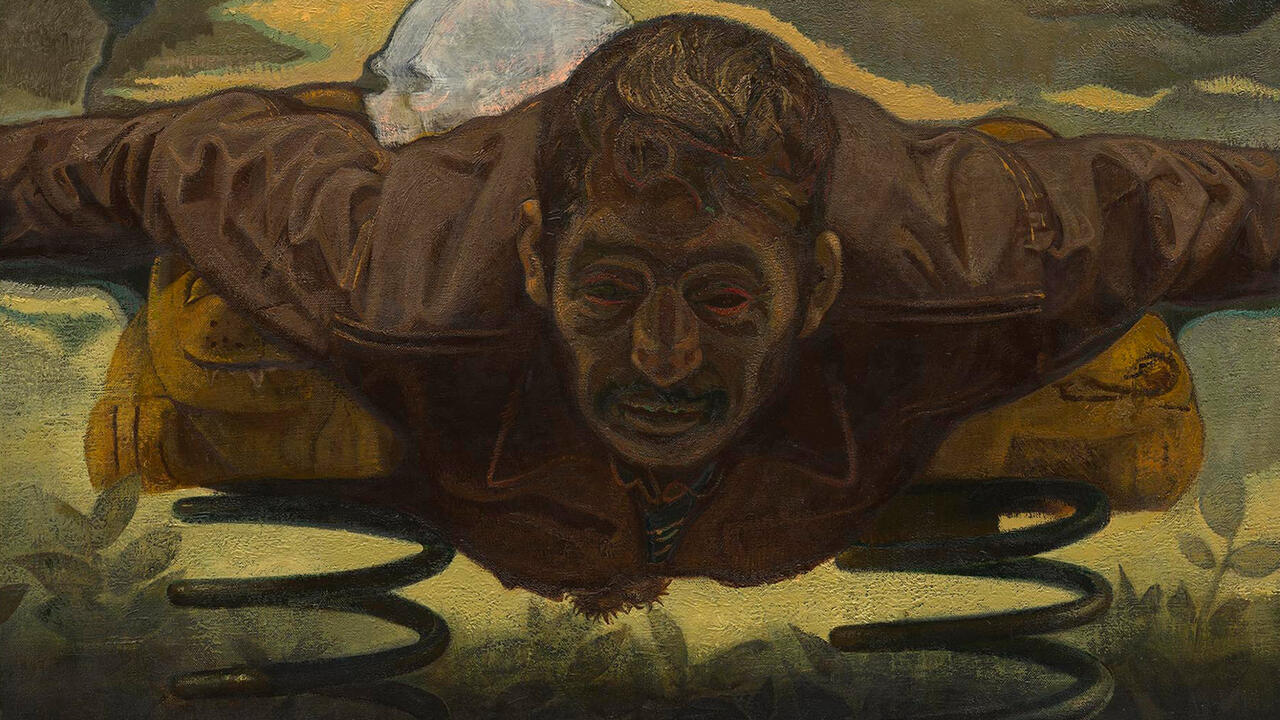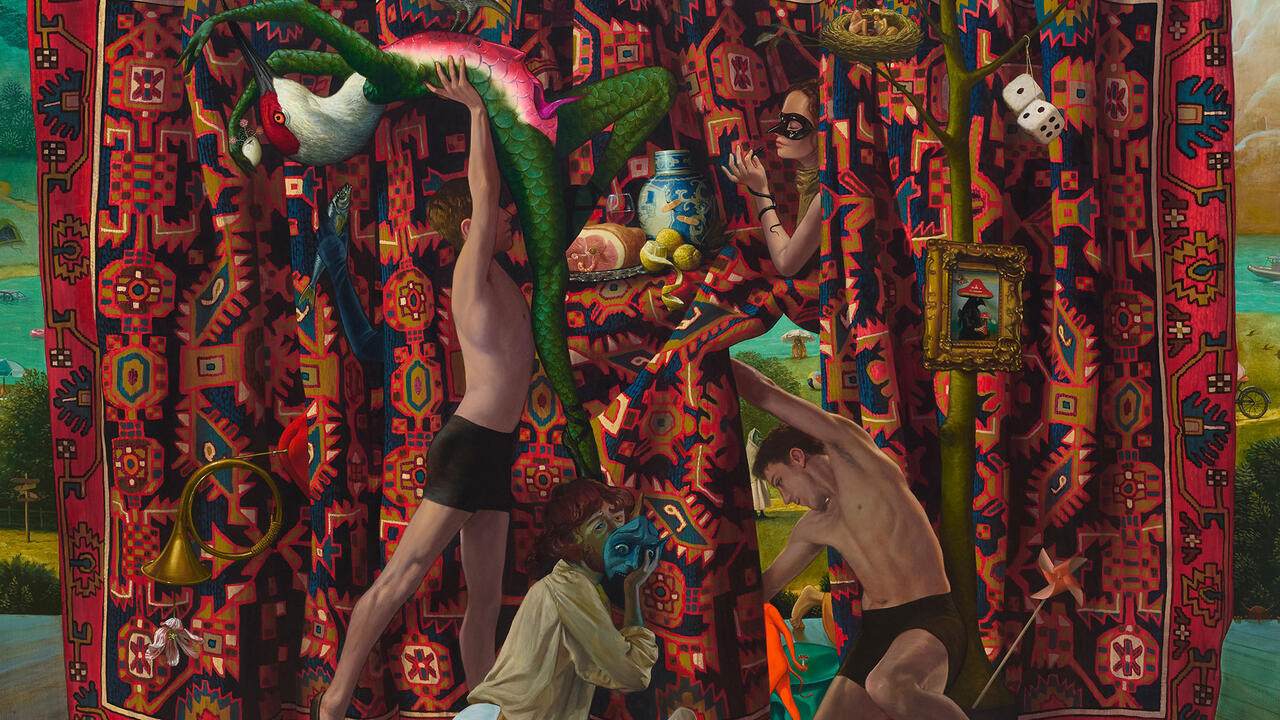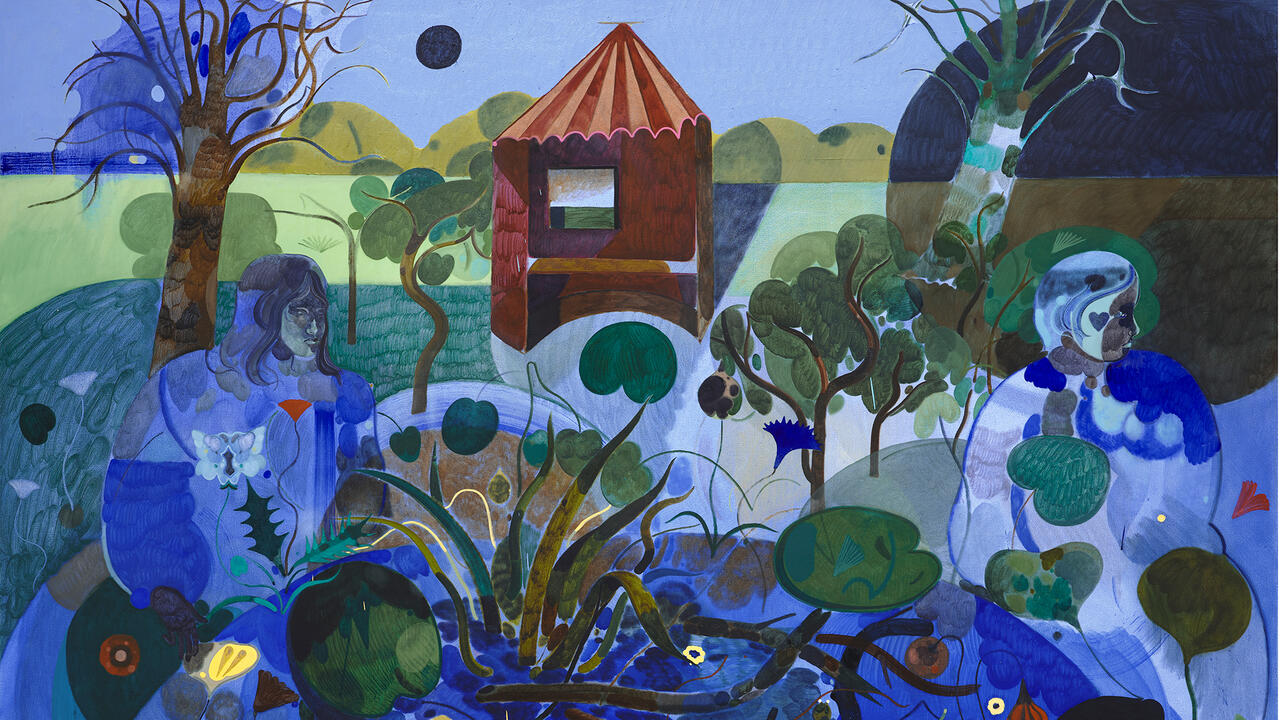What Was British Surrealism?
The movement never quite took hold in the UK but, as a new exhibition at Dulwich Picture Gallery shows, British culture was – and remains – deeply surreal
The movement never quite took hold in the UK but, as a new exhibition at Dulwich Picture Gallery shows, British culture was – and remains – deeply surreal

Surrealism came late to Britain, but in many ways it was already here.
In 1936, more than a decade after André Breton published his first surrealist manifesto, London held its first ‘International Surrealist Exhibition’. Continental luminaries like Salvador Dalí, Max Ernst, Dora Maar and Man Ray found themselves installed alongside works by a British contingent that included Edward Burra, Henry Moore, Paul Nash and Graham Sutherland. The exhibition caused a fuss – writing in the Guardian, Eric Newton said it would ‘no doubt create a stir even among those to whom modern painting usually means nothing’ – but the movement failed to take hold in the same way it held in Paris.

‘It bursts out in the mid-1930s, but in some ways it’s bursting out of something that's been here as a latent experience,’ says David Boyd Haycock, curator of the ‘British Surrealism’ exhibition that opens this week at London’s Dulwich Picture Gallery.
Indeed, surrealism has extensive roots in British culture: Breton dropped the Gothic novel into his manifesto and namechecked Jonathan Swift and Lewis Carroll alongside Charles Baudelaire and the Marquis de Sade. The writer Philippe Soupault took inspiration from the ecstatic visions of William Blake in his approach to automatic writing. There were plenty of precedents, so why did surrealism-with-a-manifesto struggle to find a foothold when it came to town?

The revolutionary element didn’t take in England at all,’ Haycock tells me. ‘[The art historian and critic] Herbert Read was an anarchist, but Henry Moore or Paul Nash […] they don’t see a particular desire for revolution.’
Surrealism in Paris had a strong connection to the French Communist Party in its early years; Breton was eventually expelled in 1933, turning first towards Trotskyism and, later, towards anarchism in the wake of World War II. ‘It was in the black mirror of anarchism that surrealism first recognised itself,’ he wrote in 1952. The unconscious mind was to be liberated, in Breton’s view, from the shackles of bourgeois rationalism and, while elements of this were certainly taken up by British artists (overlapping in many ways with the socially radical Bloomsbury Group), the movement’s political commitment largely failed to hold together on this side of the Channel.

But perhaps surrealism was also only ever a new name for deeper-running tendencies in British culture: ideas around the subversion of landscape, bodies and social order; tendencies that still run beneath our current age.
There’s an early Sutherland etching titled Pastoral (1930) that shows a country path running towards the treeline, flagged by a gnarled trunk. It’s a quietly strange picture, pulling on the visionary romanticism of Samuel Palmer, a disciple of Blake, but turning it towards pre-Christian, pagan imagery while at the same time managing to sit somewhere between Giorgio de Chirico’s long shadows and Max Ernst’s impenetrable forests.
These haunted landscapes were furrows Paul Nash also ploughed, making fields and coastlines strange, mapping the threat, doom and impending disaster of war. But was he at his most surreal when he wasn’t a surrealist? ‘In his very early works, before World War I, there’s an element of surrealism before the existence of the word,’ says Haycock. ‘When he’s trying to be a surrealist in the 1930s, when he’s very conscious of it as a movement and an idea, he’s less successful.’

It’s an interesting distinction. There’s an eeriness to Nash’s early paintings, many of them depicting the area around his family home in Buckinghamshire: the ‘bird garden’ and its boundary to the countryside. It’s this threshold, between the garden and the woods, between the tamed and the wild, waking and dreams, that compels other artists. It’s a place where Lewis Carroll places wonderland; where Marion Adnams’ paper child dances in L’infante égarée (The Lost Child, 1944); where Leonora Carrington’s women sit surrounded by birds in The Pomps of the Subsoil (1947).
After all, the subversion of the garden is also the subversion of British social order. The nonsensical garden games of Alice in Wonderland undermine Victorian decorum. A garden is full of jostling bones in Edward Burra’s Dancing Skeletons (1934). In one early Francis Bacon painting, Figures in a Garden (1935), a distorted body stands, teeth bared, against ordered lines of grass. Terry Gilliam frequently pulled on images of English garden parties in his collaged animations for Monty Python’s Flying Circus (1969–74). In JG Ballard’s surreal short story from 1962, ‘The Garden of Time’, a pair of aristocrats are besieged by a mob in a garden of crystal flowers.
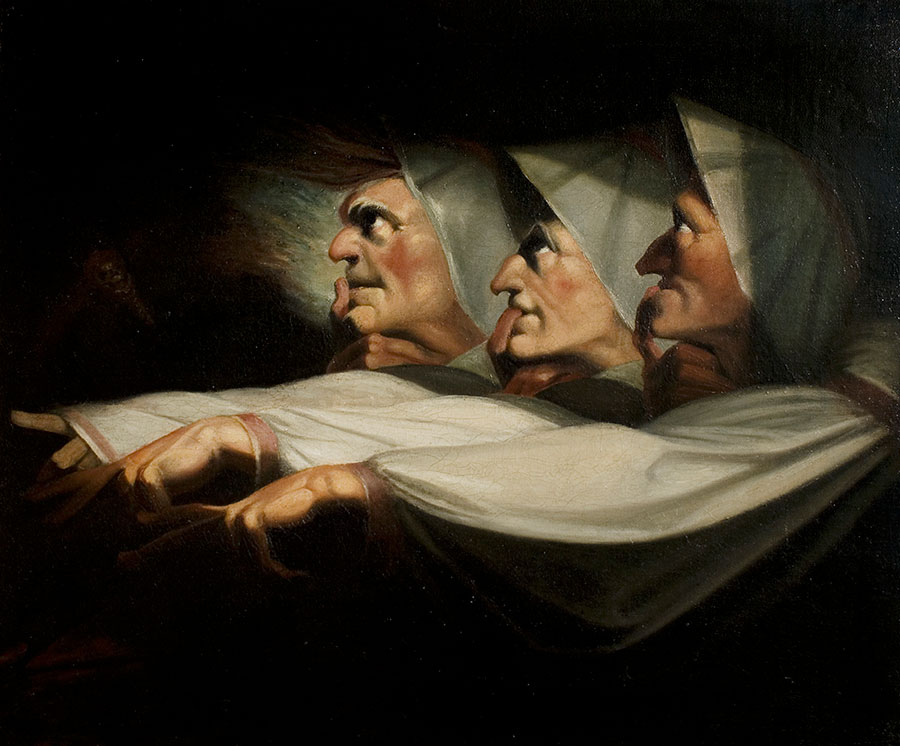
Even if there’s not a garden in sight, the same tensions between repressed and wild nature surface all over the place in a more recent vein of British surrealism, from a lord of the manor who decides to live outdoors in Chris Morris’ Jam (2000), to the horror bubbling beneath Royston Vasey in The League of Gentlemen (1999–2017). Call it strange, call it visionary, call it eccentric, call it surreal, these works tap into a seam than runs deep in Britain’s character: the violence beneath the politeness, the chaos beneath the civility. Perhaps it’s the weather.
In his 1932 text Communicating Vessels, Breton says he hopes surrealism ‘will be considered as having tried nothing better than to cast a conduction wire between the far too distant worlds of waking and sleep, exterior and interior activity, reason and madness, the assurance of knowledge and of love, of life for life and the revolution’.
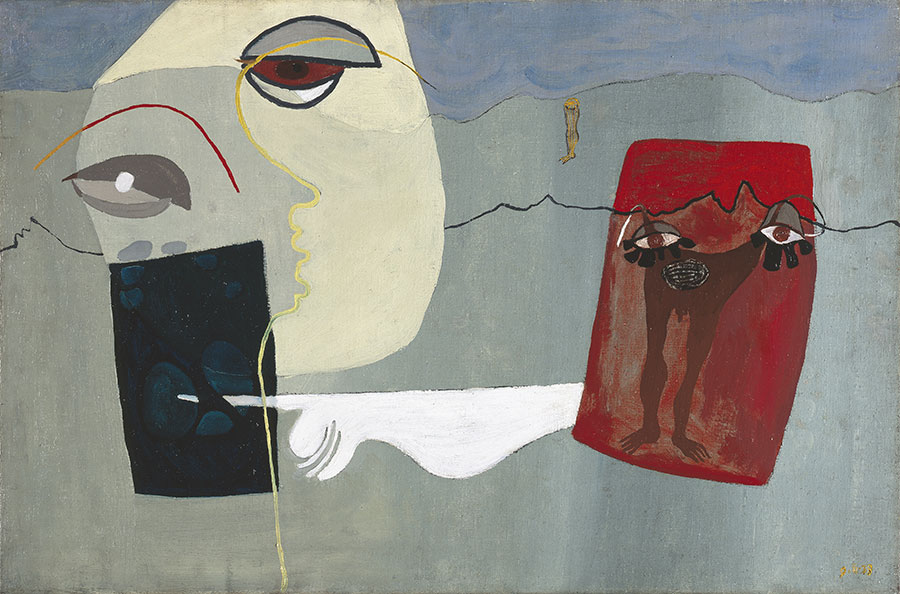
The final word may have been what stuck in the throat for the British surrealists, but that could be changing. There is social anger, as much as strangeness and playfulness, in the dreamlike films of Mark Jenkin, the nightmarish poetry of Rachael Allen and the art of Heather Phillipson, whose commission for Trafalgar Square's Fourth Plinth – a giant swirl of whipped cream topped with a cherry, a fly and an equally unappetizing drone – will be unveiled in London next month. The conduction wires between order and anarchy, reason and madness, are already part of this country’s circuitry; in our uncertain time, when reality already feels as if it has sunk below us, those lines are humming with electricity.
‘British Surrealism’ runs at Dulwich Picture Gallery, London, UK until 17 May 2020
Main image: Edward Burra, Dancing Skeletons, 1934. Courtesy: © Tate








